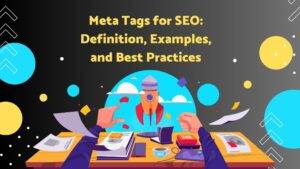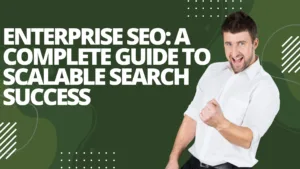The Periodic Table of SEO Elements by Search Engine Land (first introduced in 2011 as The Periodic Table of SEO Ranking Factors) is a globally recognized framework that simplifies the understanding of key components in building a strong SEO strategy.
This guide is especially useful for beginners in SEO, as well as clients or stakeholders, to grasp the main factors that contribute to long-term success with consistent effort.
The table organizes 44 SEO elements into distinct groups, all of which are explained in detail. Importantly, no single group or element outweighs the others—each plays a role in the bigger picture.
In SEO, the focus is on executing every aspect effectively, as all elements are interconnected.
However, depending on your industry, market, or niche, some factors may carry more influence in improving visibility on search engines than others.
Ultimately, the exact weight search engines assign to these elements is unknown, and any attempt to provide precise “scores” would be purely speculative.

The Element Groups
The SEO Periodic Table is divided into groups of related elements. Each element represents a factor that plays an important role in achieving SEO success.
The main table features seven groups: Content, Architecture, Code, Credibility, Links, User, and Performance.
Content
Content is at the core of SEO—without it, ranking in search results is impossible. However, publishing content without direction or a defined strategy won’t produce meaningful results.
The Content group of the SEO Periodic Table highlights the most important elements for creating material that search engines are more likely to reward with higher visibility and rankings. Most of these elements fall under on-page SEO or content marketing.
- Quality: Produce high-quality, useful, and error-free content for your target audience.
- Keywords: Use the terms your audience searches for, but integrate them naturally and avoid keyword stuffing.
- Freshness: Publish timely content in markets where it matters, and update or remove outdated pages.
- Relevance: Ensure your content aligns with the needs and expectations of your audience.
- Accuracy: Deliver on what your content promises—avoid misleading or clickbait titles.
- Depth: Make your content detailed and substantive rather than focusing only on word count.
- Uniqueness: Offer original perspectives or insights that differentiate your content.
- Answers: Provide complete and direct responses to user queries.
- Multimedia: Use visuals, video, or audio to enrich content and increase visibility in search features.
- Language: Write in the language your audience speaks—for example, U.S. English for American readers.
- Consensus: In certain industries, align with trusted sources and recognized best practices.
- Value: Every piece should serve a clear purpose beyond ranking—offering genuine value to readers.
Architecture
A well-structured site supports your SEO efforts, while a poorly organized one can cause ongoing challenges and limit results.
The Architecture group of the SEO Periodic Table highlights the essential factors for building a site that both search engine crawlers can easily access and users can navigate smoothly. It also helps clarify the purpose of your website and its individual pages. Most of these elements fall under on-page and technical SEO.
- Crawl: Ensure your website can be fully crawled so search engines can render all page content.
- Taxonomy: Organize your site around topics and subtopics, using interlinking and entities to strengthen topical authority.
- Page structure: Balance main content, supporting material, and ads so both users and search engines can clearly distinguish each section.
- Mobile first: SEO starts with mobile. Design primarily for mobile users while maintaining a consistent experience across all devices.
- URLs: Keep URLs straightforward and descriptive.
- Canonicalize: Apply canonical tags and redirects to consolidate duplicate content.
- Pagination: Use logical pagination to break content across multiple pages when necessary.
- HTTPS: Secure your site with HTTPS for both safety and trust.
Code
Though not visible to users, clean and well-structured code is essential for SEO. You don’t need to be a programmer, but understanding HTML, schema, and scripts (like JavaScript or Python) and their SEO impact is important.
The Code group of the SEO Periodic Table covers the technical factors that improve user experience and help search engines render and understand your site’s content.
- Titles: Create descriptive, optimized titles that encourage clicks.
- Descriptions: Write meta descriptions that clearly describe page content.
- Headings: Use headings and subheadings that naturally include keywords.
- Image Alt: Add alt text to images for accessibility and image SEO.
- Schema: Apply structured data to highlight entities and improve SERP snippets.
Credibility
Google’s Search Quality Evaluator Guidelines stress the importance of E-E-A-T: Experience, Expertise, Authoritativeness, and Trustworthiness. Similarly, Stanford’s Guidelines for Web Credibility outline principles for building trust online.
Though not direct ranking signals, these concepts guide what search engines reward.
The Credibility group focuses on factors shaping your reputation, which can influence visibility in search and overall brand perception.
- Trustworthiness: Maintain honesty, accuracy, safety, and reliability across all content.
- Experience: Content should demonstrate first-hand or lived experience.
- Expertise: Information must reflect skill, knowledge, or familiarity with the subject.
- Authoritativeness: Aim to become a trusted resource, backed by mentions, links, and recognition.
- Brand: Logos, colors, tone, and assets (such as expert articles, reviews, and references) all contribute to brand identity.
- Creator: Credentials, achievements, peer recognition, and professional background shape how creators and brands are perceived.
Links
Links have been vital to SEO since Google’s PageRank introduced them as a ranking factor in 1998. While quantity once dominated, quality now plays an equally critical role.
The Links group focuses on link-related factors, covering both internal and external connections, and the context they provide for search engines and users. Link-building has long been its own SEO discipline, while internal and outbound linking remain core on-page and technical SEO tasks.
- Anchors: Anchor text should be short, clear, and relevant to the page it links to.
- Inbound: Earn high-quality backlinks from trusted, relevant websites.
- Internal: Use internal links through navigation, breadcrumbs, and in-content references to guide users and signal page importance.
- External: Link to credible third-party resources that add value for your readers.
User
One of Google’s guiding principles is: “Focus on the user and all else will follow.” This is why understanding your users’ needs, concerns, and expectations is crucial — and finding the best way to deliver on them is non-negotiable. Google also pays close attention to how people behave within its search results.
The User group of the SEO Periodic Table centers around delivering the best possible experience to people. Since these factors are driven by real users, the insights you gain here can directly inform SEO strategies that align with audience needs.
- Accessible: Ensure your site is usable and inclusive for all.
- Intent: Look beyond keywords to understand the purpose or meaning behind searches (wants, needs, and motivations).
- Interactions: Search engines monitor how users click, scroll, hover, swipe, or refine queries in the SERPs.
- Locality: Provide localized, authentic experiences tailored to regions, cities, or neighborhoods.
- Satisfaction: Deliver value so users feel their needs are met and don’t move on to competitors.
- Task completion: Guide users toward achieving goals, including completing conversions on your website.
Performance
After your site is structured and optimized, the next step is to measure how it performs in the real world. While some of these factors may not directly influence rankings, poor performance often frustrates users — which can hurt engagement, conversions, and revenue.
The Performance group of the SEO Periodic Table highlights technical elements that shape a smooth, positive on-page experience.
- Speed: Ensure fast-loading pages across all devices.
- Responsiveness: Minimize lag between user actions and updated page content.
- Visual stability: Keep layout shifts (such as text or images moving around on load) to a minimum.
The SEO Periodic Table (Version 7, 2024 Edition)
This is the framework that brings together the art and science of SEO in one place.
The updated SEO Periodic Table offers a practical visual guide for planning and refining SEO strategies across different websites and industries. While the importance of each factor will vary depending on your situation, this version gives a reliable foundation for building sustainable search success in 2024.
SEO continues to be part science and part creativity, and this table remains a key reference point for strategy and experimentation.
History of Search Engine Land’s SEO Periodic Table
2024 Update
The 2024 edition simplified the table compared to 2021, removing elements that overlapped or added complexity.
- The Niches group (Local, News, and Ecommerce SEO) was eliminated to streamline the focus on universal SEO principles.
- The Toxins group was also removed. The reasoning: if you consistently follow best practices outlined in the table, you won’t engage in harmful tactics that risk penalties or algorithmic downgrades.
- Two groups were renamed for clarity:
- Code (previously HTML)
- Credibility (previously Reputation)




